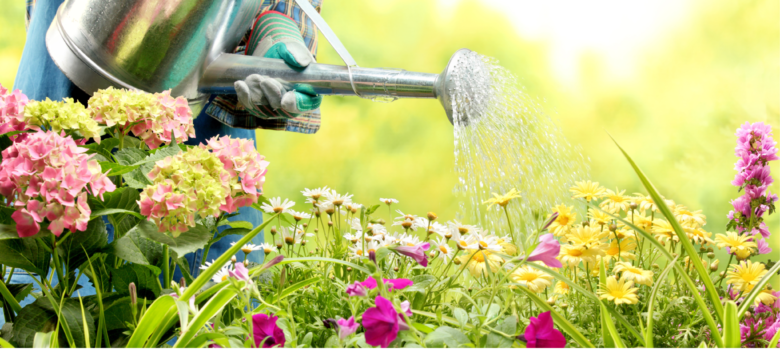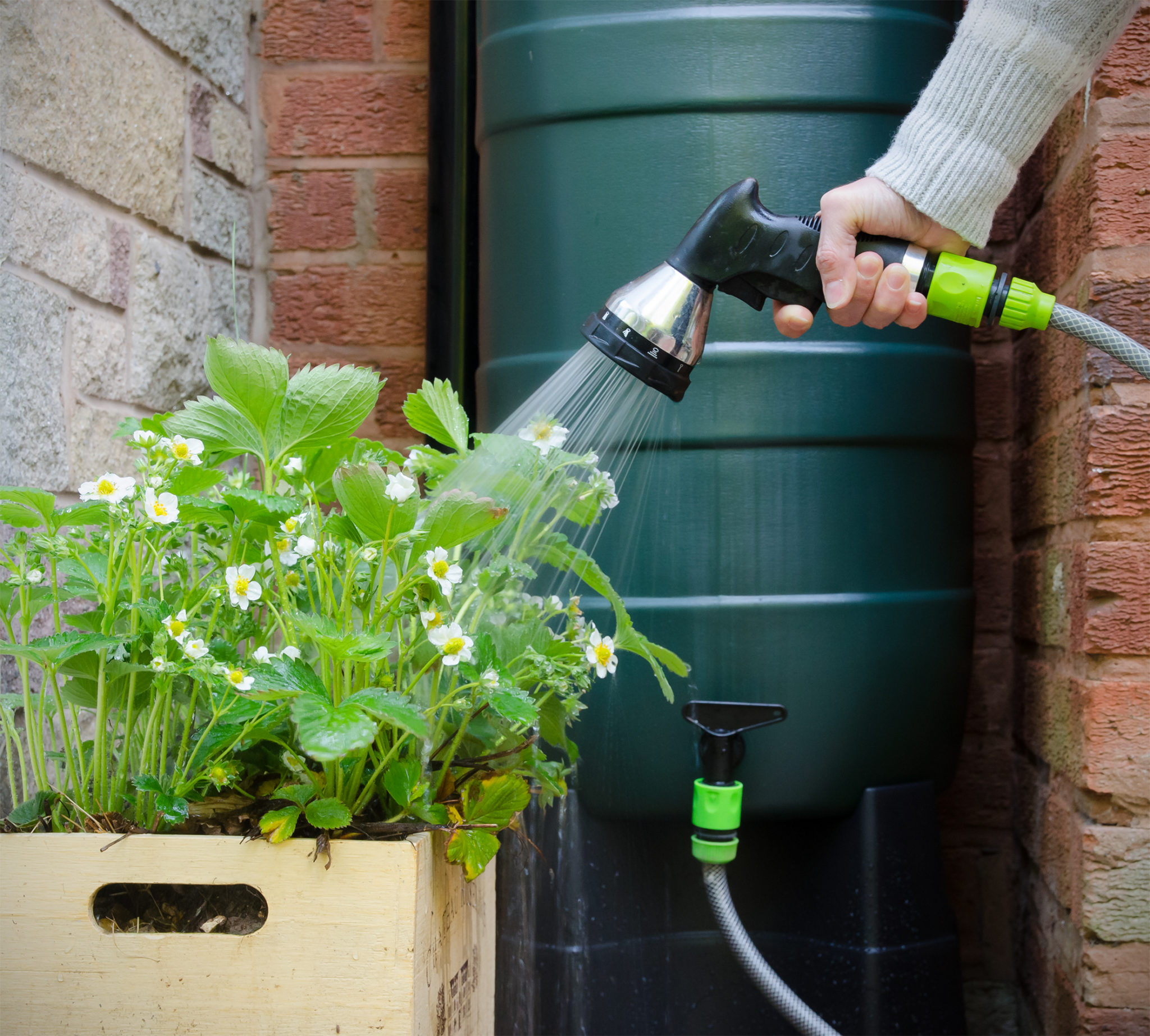
We are now entering another Summer, and if this year is anything like last year it’s set to be a scorcher! With those sunny and hot days to come, water then becomes an even more precious commodity, especially if we have a nice sized garden at our disposal.
We all want our lawns as green as they can be, and our flowers to bloom, so that we have perfect gardens for the summer. We may also use our gardens for paddling pools or other water activities to help us enjoy the sunshine whilst staying nice and cool.
But how do we do these activities whilst saving water as well? Also, how do we still have fun, without racking up massive bills on our water meters?
In this article, we have discussed some ideas on how you can start considering saving on water for your garden.
What is the best way to water your garden?
What we think about sprinkler systems
It is easy to understand why sprinkler systems are a popular garden favourite. They allow you to sit back and relax whilst they do all the work, however it often results in a substantial waste of water. Sprinkler systems are an inefficient way to directly water your plants, given the likeliness that they are most likely to sprinkle everything else other than the things you want them to.
Are water hoses water efficient?
A garden hose, on the other hand, is a very direct method of using the water as you get to choose where the garden is watered – depending on which plants need the most water, and where there is the most vegetation that requires it.
However, these can still contribute to water loss, but not as much as a sprinkler system. Water losses can happen at the tap to hose connection or at the nozzle valve.
Are sprinkler hoses any better?
So, what doesn’t waste water? Well, a sprinkler hose combines the above two options, and helps you use just the amount of water you need in a targeted area.
However, if you are looking to go a step further in your quest for water efficiency, then a water butt could be just the solution you are after.
What is a water butt?
 A water butt is designed to collect rainwater, so you can use it when needed, provided it has rained enough and you have collected some. We have the advantage of rainwater being completely free, so it would be stupid not to use it! You can easily connect your garden hose to the water butt, or if you prefer you can fill a watering can. A standard 210L water butt takes around 1-2 months to fill up, so you can leave the water butt to fill up in the winter and it will be ready for the hot summer months when plants need watering most!
A water butt is designed to collect rainwater, so you can use it when needed, provided it has rained enough and you have collected some. We have the advantage of rainwater being completely free, so it would be stupid not to use it! You can easily connect your garden hose to the water butt, or if you prefer you can fill a watering can. A standard 210L water butt takes around 1-2 months to fill up, so you can leave the water butt to fill up in the winter and it will be ready for the hot summer months when plants need watering most!
Choose the right plants to save on water
Did you know that some plants do not need watering?
It’s true, you can choose to fill your garden with plants that will bloom all by themselves.
They may need a little nurture now and again, but these plants can survive long periods of time without water, even in very dry climates.
What are some of our favourite water saving plants?
- Black-eyed susan – These sunshine yellow, daisy-like flowers can grow between 30-100cm tall. They grow with coarse hairs that help trap moisture, meaning they can flower in very dry conditions.
- Verbena – If you are looking for plants that will thrive in full sunlight, then Verbena is what you need. Even in very dry, arid environments, this plant thrives and can flower up until late autumn.
- Lavender – This plant loves heat and rarely needs watering, so will be a great addition to your garden, and will give a relaxing aroma too!
- Cosmos plants – These flowers seem to thrive in water deprived conditions, by flowering more the longer you neglect them.
- Coneflowers – They usually grow in dry grasslands and can grow up to 4ft tall. Coneflowers will grow well even if you forget to water them.
- Stonecrops – These plants have leaves that store water, meaning they can cope by themselves for a long time.
- Blanket flowers – They can survive with only occasional watering and can cope with extreme heat.
- Flowering globe thistles – They grow best in dry soil and love hot summers. You only need to water them occasionally when they are growing.
- Bougainvillea shrub – This is one of the best flowering shrubs that can survive in a low water environment. They are popular in hot climates such as the Mediterranean and California. It produces a spectrum of vibrant colours so will definitely brighten up your garden.
- Yarrow – It grows well in dry and damp areas of soil, thanks to the hairy stems that help them in rain deprived conditions.
- Succulents – The leaves store water which allow them to grow on their own without water for a long time. Lots of people choose to have succulents as house plants, but they can grow outside as well.
Artificial grass saves a ton of water!
Another way you can avoid watering the garden, is to swap your lawn for artificial grass. Although it is not the best when it comes to the environment, from a water saving point of view, it is worth considering! For my own lawn, it costs approximately £5.26 for each time I water it. So, by switching to artificial grass you will be saving a lot on your water bills.
You can get artificial grass fitted by a professional, or if you are only looking to cover a small area, you can buy it from local garden centre, hardware shops, and even Amazon.
Invest in a covered pool or hot tub to save on water
How many times do you fill the paddling pool up in the summer? Wouldn’t it be useful to have a pool that you don’t have to refill as often? By investing in a more durable pool or hot tub, with a cover you can keep the water store in them for round 4 weeks, depending on how much you use it. This can be an expensive option if you choose a high-end tub, however there are lots of affordable choices out there, compared the high-end pools and hot tubs.
The Lay-Z-Spa hot tubs are recommended by many people across the UK, and they are priced at around an average of £200-£800.
A cultural change required to save water
Sometimes, all you need to change a bad habit is to change one’s mindset. If you are looking to save on water, we promise this won’t take much effort on your part to do so. Reconsidering if you need certain things can result in a positive outcome. Ask your self the following questions:
Does your lawn need to be greener than your neighbour? Do you really need a state-of-the-art swimming pool to spruce up the garden? Is it a problem if you don’t have to fill-up all the available space with flowers, but choosing to be more selective where they are planted?
These are all things worth considering when thinking about trying to save water.












No Comments yet! Be the first one.